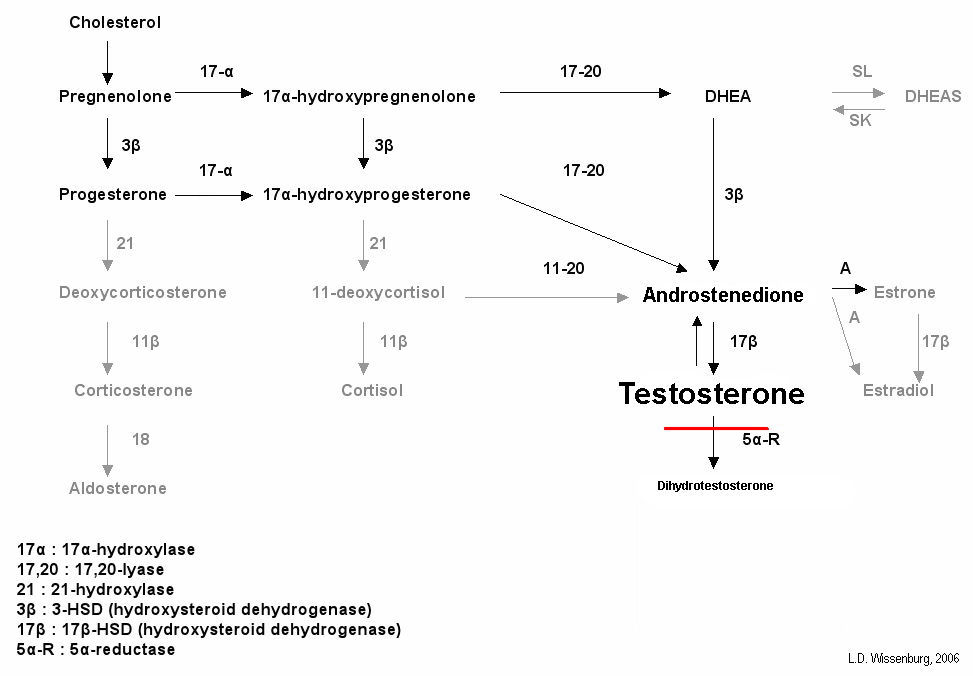5-alpha-reductase deficiency pathophysiology
|
5-alpha-reductase deficiency Microchapters |
|
Differentiating 5-alpha-reductase deficiency from other Diseases |
|---|
|
Diagnosis |
|
Treatment |
|
Case Studies |
|
5-alpha-reductase deficiency pathophysiology On the Web |
|
American Roentgen Ray Society Images of 5-alpha-reductase deficiency pathophysiology |
|
Directions to Hospitals Treating 5-alpha-reductase deficiency |
|
Risk calculators and risk factors for 5-alpha-reductase deficiency pathophysiology |
Editor-In-Chief: C. Michael Gibson, M.S., M.D. [1]
Overview
The 5-alpha reductase enzyme is responsible for converting testosterone to dihydrotestosterone (DHT) which is a more potent form playing major roles in male sexual development. While Testosterone leads the development of internal male genitalia, DHT develops the external male genitalia. Children with 5-alpha reductase deficiency suffers from defective external genitalia and ambiguous genitalia.
Pathophysiology
5-alpha-reductase is an enzyme that converts testosterone to dihydrotestosterone (DHT) in peripheral tissues. 5-alpha-reductase deficiency-2 is biochemically characterized by low to low normal levels of testosterone and decreased levels of 5α-DHT, creating a higher testosterone/DHT ratio.

DHT is a potent androgen, necessary for the development of male external genitalia in utero.